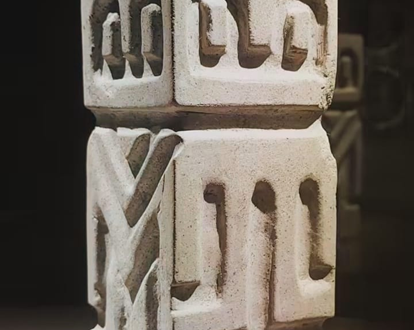agosto 4, 2023
Consorcio Relacional y Socioconstruccionista del Ecuador (IRYSE)
Maritza Crespo Balderrama, M.A. y Diego Tapia Figueroa, Ph.D.
All abuse (sexual, physical, psychological) is sustained in an asymmetrical power relationship, in which the abuser feels or is -for different reasons- above the victim and wants to let them know; it acts in such a way that its power is imposed in an abusive way.
Abuse is the result of a social construction in which it is believed that there are “second class” people, generally women and children, who must be “corrected”, “possessed”, “silenced”, “punished”, people who are not people because they are not seen as such, but as objects owned by another who is above, who is better, who has power.
In societies like ours, where arbitrariness and imposition rule, abuse in all its forms has been made invisible, silenced, and normalized, as one of the most common ways of relating, as the privileged way of sustaining couple ties (or subsidiaries) as the successful tool to remain in the leadership of the workspaces or, simply, as a duty that cannot be, is not wanted, or does not know how to change.
In the several decades that we have experienced as psychotherapists, we have been able to know stories of violence of all kinds; undoubtedly, the most painful are those that include children, adolescents, and women, subjected to abuse of power from sexual assaults, in which the perpetrators are part of close circles of relationships. Many of them (the majority) have been marked -in addition to the pain and injustice- for silence and impunity, for the cover-up of these crimes.
Why is it important to break the silence?
Talking about violence and abuse is not easy in our societies, in which the exercise of power and authority finds -in violence- the most comfortable and normalized way to sustain itself. Violence generates fear, fear sustains power.
The process that a person subjected to situations of abuse goes through is basically the same: surprise at first, then pain and a feeling of injustice that leads to guilt and, finally, fear. Fear usually becomes a gag. If the person who is being violated is also a boy, girl, or adolescent, this situation is strengthened by the socially accepted fact that children are unaware of things, that they must be corrected, or that their imagination, creativity, and immaturity are the origin of lies and confusion. In summary: their word has no strength, nor credibility, nor is it listened to by those who should care for and protect them.
Being silent is not, as people think, the most comfortable thing to do. For the person who experiences violence of any kind, keeping silent is, another form of abuse, the reaffirmation that «things are the way they are», that «they should be that way», that «they deserve that treatment», that «something I must have done was wrong”, or also “there must be something wrong with me”, and that telling it doesn’t make sense, it’s not worth it.
In our therapeutic consultation, it is quite common to hear that people (especially women) who are or have suffered abuse do not want to tell their situation for fear of «hurting» the people around them, for not worrying them, for not generating more pain; deep down, the idea that they are the ones called to protect others, with their own body, from the pain that implies recognizing that they have not protected themselves sufficiently, that they have been negligent or complicit in the act, has settled in their being.
In most cases, in societies like ours, turning a blind eye to abuse is common. Many of the situations of abuse and violence have been maintained over time because those who know about them (not the victims, but the people around them) minimize them, ignore them, justify them, silence them, or naturalize them and that makes them accomplices of the abuser; this family and social cover-up makes them accomplices of the crimes.
For the victim of abuse, regardless of age or gender, silence is yet another wound, another way of sustaining the abuse. To be silent is to cover up. To be silent is to endorse. Silence is justifying. Silence is also abuse.
Abuse must be avoided, outlawed, and sanctioned; there must be a consistent repair. Abuse, of any kind, should not be accepted or endorsed, it should not be ignored or normalized. It should be denounced because if it is not, it multiplies and perpetuates.
Talking about the abuse (leaving silence behind) is the beginning of a process, often long, of restitution of the right and dignity of the person who has been a victim of violence. It is the necessary principle that, in addition, will make it possible for the abuse not to be repeated, not to expand, and not to find more victims.
When the abuse is known, when it is known who the abuser is, the chances of repetition decrease; the only one that protects the abuser, is the secret; the family, the immediate environment, and society can organize for the protection and restitution of the rights of the people who have been victims of the perpetrator and, above all and principally: justice can be done. The possible victims will be able to be warned, they will be able to protect themselves and be protected; society will be able to put corrective measures and punish the culprit, it will be able to learn to stop being silent and its liberation will begin.
How to break the silence?
Breaking the silence in situations of abuse is a process that requires not only the will of the violated person but, above all, the participation of their family members and their close relational contexts and also, at a more extended level, the intervention and work of social entities and the State, which allow guaranteeing protection and rights.
Let us start, then, by pointing out that in the first instance, we must all be aware as a society, that abuse and violence are not -under any circumstances or under any pretext- ways of relating, ways of bonding, rules of positive conduct. They cannot be allowed or endorsed.
More than normalizing silence and abuse, what is required is normalizing the word, credibility, and trust in people who are and can be victims of violence (which we are all). For this, it becomes essential to promote a culture of good treatment and human rights.
At a closer level, building as a family, spaces for dialogue in which there are no taboo or proscribed topics is something basic; protected spaces where speaking, manifesting and freely expressing what one feels and thinks is legitimate; where trust, understanding, authentic affection are practiced and the rights of all are respected.
Talking to children and adolescents about the risks they could be exposed to and about guidelines for their self-protection is a good start; however, it is also important to build spaces for conversation and trust, to be able to talk about all the issues that have to do with life; also, that they know, feel, and live knowing that they can count on their fathers, their mothers, and the adults around them, that they can tell them and talk to them about everything, without them being scared or shocked, that they are believed, that they are understood, that they are loved, that they are respected and accepted.
Opening relational spaces based on credibility, respect and trust helps so that, in situations of abuse, the silence is broken and cruelty and injustice do not go unpunished.
Another fundamental element is that the people who listen to the reports of abuse take the side of the victim and not the aggressor; the first reaction that a person who finds out about a situation of abuse should have, is to believe the victim and act accordingly. This implies not asking them to recount what they have suffered over and over again (revictimize) or to face the aggressor (which instills fear and prevents trust), but to listen and proceed immediately so that the person who has been a victim can be safe and protected: separate them from the aggressor, make their space a safe place (it is the aggressor who must leave the home, for example) and begin a process of external support, with a relational network, which must include psychological support, in all cases, and medical (if applicable), in addition to legal protection.
In no case is it convenient to underestimate the pain of a person in a situation of vulnerability, to believe or demand that they resolve the issue alone, or that they should “fix» themselves. A person who has been subjected to a situation of abuse cannot, in any case, resolve the issue alone; they require professional support, and psycho-emotional support, to activate a family and social support network.
We must repair to generate hope and the creative and courageous construction of new futures with love, dignity, joy, and freedom.
(***) Authorized reproduction of the publication, in March 2023, in the Magazine https://www.maxionline.ec/
Suggested bibliography

English translation of Bruno Tapia Naranjo.



